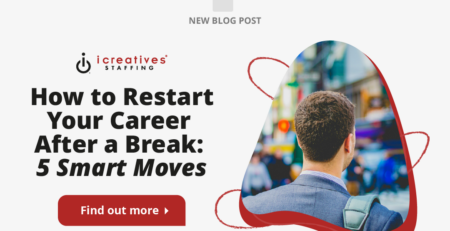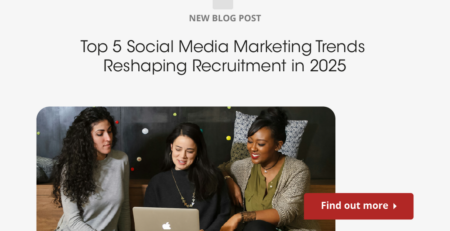6 Tips for Building Brand Loyalty
The end goal of highly effective user-based design is return clientele. To earn that sort of customer dedication, stellar products, and stand-out branding are needed in combination. Loyalty is based on trust, which in turn comes from repeatedly good experiences with brands that visibly care about and empathize with their users.
Building brand loyalty can be done in many ways. It all starts with a coherent strategy and company mission that inform the organization’s design thinking from the outset. Read on to find out everything you need to know about brand loyalty and how you can build it with clear branding and design that centers the user’s needs, desires, and environment.
Brand Loyalty vs. Customer Loyalty
Many people have go-to brands for certain purposes. It could be shops you frequent or specific product models that you reach for at the grocery store. People base these preferences not only on their personal experience with a product or brand but also on what they see on social media, through marketing, or via hearsay from their friends and family.
When the attachment is for a particular product or service, that’s called customer loyalty. The user may prefer certain products or services without having an attachment to the brand as a whole.
Brand loyalty is trust that has built up between a brand and customers across product lines and service offerings. It takes more time to develop but it is usually much stronger and has more staying power.
In some ways, built-up customer loyalty and continuous positive experiences evolve into brand loyalty. However, companies also need to take steps to link different experiences with the products and services of a brand into a cohesive story to encourage the growth of lasting brand loyalty.
Depth of Brand Loyalty & Customer Dedication
Companies should approach each interaction with users and prospective customers as an opportunity to build brand loyalty. Even if they’ve had experience with the brand in the past, building positive experiences and meeting users’ financial needs and expectations helps strengthen bonds between the brand and the user.

Here are some common levels of brand loyalty so you can start building brand loyalty at any stage of engagement.
- Brand Recognition
When people link your brand with a product, logo, or messaging, you’re in the earliest stages of customer and brand loyalty. You can achieve brand recognition with social media marketing, traditional radio and TV commercials, word of mouth, and customer testimonials.
Designing a great logo and copy also go a long way in establishing brand recognition. A logo or mascot that is instantly recognizable with or without context gives the customer something to latch onto. It signifies the entire brand and allows for the brand to communicate with users and prospective customers with crucial immediacy.
- Preference
Brand recognition is fantastic, but the goal is for users to build a preference for that brand. Remember, this isn’t a preference for one or two particular product lines. Customers will ideally prefer anything with your branding on it to anything else.
However, that won’t always be the case when they only have a simple preference. When everything is equal – price, convenience, packaging, quantity, quality, etc. – then people with a brand preference toward your company will select your product. Competitors can still sway them with pricing promotions, gimmicks, or improved quality.
- Insistence
At the highest stage of brand loyalty, customers will insist on having your brand regardless of what the competition might have on offer. Reaching this level in today’s saturated markets is a challenge, especially for companies in sectors where research and development are highly competitive.
It’s fairly rare for the quality of the products to lead to brand insistence by themselves. It may happen with brand new innovative products like the original smartphone, but once the innovation gap is closed the brand insistence could falter. The entire experience with the brand – from the marketing to purchasing through to using and disposing of the product – must present a cohesive experience for the user.
The Psychology of Brand Loyalty
Users build up opinions and perceptions of products and brands even when they forget the exact product or service they used. Think of a strong branding strategy as the personality of your brand. A strong, winning personality is going to keep your brand at the forefront of users’ minds and build increasing levels of brand loyalty.
There are 5 core aspects of the psychology of brand loyalty: sincerity, excitement, competence, sophistication, and durability. Any of these aspects can be consciously or unconsciously accepted by recipients of messaging or by users of the product or service.
1. Sincerity
People have to believe that your brand means what it says. Authenticity and competency play a large role in perceived sincerity. What the brand does will be more important than what it says, especially when it comes to customer service and social media.
Generally speaking, the brand should be cheerful, honest, and genuine. Bring your company’s mission statement into the mix and show people who you are. Transparency is also a great way to come across as sincerely concerned with the well-being of your customer base.
2. Excitement
Put your imagination and innovation on display to show people that you’re excited enough about your ideas to put extra effort into making them unique. Your branding should be telling potential users that you have a solution to their problems and the excitement within the tone of that branding should convey that you are thrilled to have a solution to offer them.
Excitement plays into sincerity. It can also make a brand look more adventurous and on the cutting edge of technology or their industry.
3. Competence
The company should have a certain area of expertise and be very clear about what that area is. Branding ought to communicate the companies’ authoritative knowledge and experience base and show how all that knowledge and skill went into the design of the good or service.
A brand’s competence should also lead to a more efficient product for the user. They should be confident that they can turn to your brand whenever they need to problem-solve in your area of expertise.
4. Sophistication
Start-ups may have changed what sophistication looks like in the 21st century, but it’s still crucial for a strong branding strategy and customer dedication. Even if your company is brand new and just launching its first product line, you should make the effort to come across as having developed the final product through research and design thinking.
What you have to offer should be clear and fully developed. Half-baked ideas will only confuse your potential customer base and undermine the competence and seriousness of your brand in their eyes.
5. Durability
Can your brand be counted on well into the future? Maybe the product is inexpensive, but is it worth buying if it breaks down too soon? If you specialize in perishable goods, can the quality of your product be depended on every time the user returns in the future?
The customer experience should be lasting and consistent from start to finish. That gives your branding durability – meaning it can stand up to scrutiny and stand up to scrutiny and criticism from competitors and people with differing brand loyalties.
Behavior Changes for Building Brand Loyalty
Take a look at these general steps for changing perception and behavior and bolstering brand loyalty.
- Change Associations
People come to have opinions about brands in a variety of ways. You can change their minds with shocking, exceptionally good, and unexpected brand action.
- Lead the Imagination
Your brand needs to control its own messaging. Although other channels of advertising and customer reviews exist, your user journeys should be indisputably and demonstrably good. The path into the future should also be illuminated by the brand.
- Surprise the Public
The brand doesn’t have to try and be edgy or shocking, but it can grab additional attention with imaginative messaging and actions. Community outreach and behavior outside the quest for profit are two great branding strategies in this area.
- Stand up to Critique
Let your products and user experiences speak for themselves. Back up your users and products with stellar customer service and don’t be afraid to admit when mistakes are made so that you can be proactive in correcting them.
- Take Action
The most important thing for a strong branding strategy is actionable solutions. Users don’t have much need for brands who say nice things on the internet or in advertisements so much as they need brands that are on their side to help problem-solve no matter what the issue is.
6 Tips for Building Brand Loyalty
No matter if your brand history is extensive or just beginning, you can use the following tips to build customer dedication and brand loyalty.
1. Set Your Goals
The company mission statement should be apparent throughout the product design process and the users’ journey with the brand. You can make this more likely to be the case by laying out your goals from the very beginning. That doesn’t mean you can’t make adjustments or overhauls later, but it helps shape a cohesive user experience.
A company’s goals should be a blend of business concerns and the needs and desires of customers. If you already have many product lines, you can set goals on specific projects to ensure the user experience is as you intend it and you have a way to measure progress along the way.
2. Research the Users
Setting goals is a great place to start. Too many companies make the mistake of aiming for imaginary customer bases and inventing needs or wants that simply aren’t there. This is usually a simple case of replacing other people’s desires with those of management or designers.
UX research is incredibly useful in this endeavor. Real users are happy to give their opinions and other information. Plus, if your brand is perceived as one that listens to its customers and implements their suggestions, brand loyalty will only grow.
You should also try to find out what is already on the market so you can provide goods and services for people without overwhelming them or cluttering the market. Use innovative research strategies as part of promotional campaigns to enhance your branding strategy.
3. Decide On a Behavioral Strategy
This tip is more for marketing professionals. The psychology of UX design typically relies on one behavioral strategy among many. Using multiple approaches could muddle the messaging and confuse the potential customer base.
You might be trying to elicit commitments, invoke social norms, create awareness, drive preferences, or cash in on a regular life change like moving out or going to college. But if you can’t focus on one of these approaches you risk ruining your branding message.
Prospective customers can be overwhelmed with too many options. Companies risk undermining their entire branding strategy if they aren’t straightforward about their asks and what options they have available.
4. Test Everything
Prototyping and testing products and marketing materials are common aspects of most design thinking already. It’s especially important for building a strong branding strategy because once the message is broadcast it’s hard to pull back.
For example, if your marketing copy comes across as insensitive, you can bet people will be taking screen grabs of it off social media before you can manage to take it down. Sometimes this is relatively harmless and forgotten by most people before it can impact your brand, but other times it lives on far longer than you might expect it to.
Bringing in users and showing them a variety of messaging is a great way to find out what is effective with them. Just like other types of user research, this increases interaction between people and the brand, creating stronger brand loyalty in the long run.
5. Personalize Your Marketing
Cookies and other sources of user data can help automate personalized ads, but there are also ways individual brands can accomplish this task to tailor promotional materials even closer to their users’ needs and desires.
For example, surveys and follow-up questionnaires generate more useful information than clicks alone, especially if you can ask questions about the typical subjects. Whenever possible, have a real person reach out to find out how users felt about their experience with the brand.
Compensating users with discounts is a nice incentive for them to provide additional information. Create a loyalty program so you can quickly compensate customers with points and sales discounts whenever they complete a survey or questionnaire.
6. Be Visibly Proactive
Social media has greatly impacted the way brands interact with customer bases. Rather than the fixed communication channels like phones and one-way marketing, social media allows people to tag brands with complaints and ideas.
Even more importantly, other people can see how these interactions play out. Brands that come across as tone-deaf or don’t answer at all are ruining their credibility with people who may not have even used the product. Bad branding is just as powerful as good branding.
If people can see your brand reaching out on social media and have access to entertaining customer testimonials, they’re more likely to start positive associations with the brand. Rather than waiting for people to reach out with complaints or problems, advertise channels for people to reach out and give constructive feedback.
Most importantly, respond to people who have issues and be proactive about imagining and executing solutions to improve their overall feeling. Turning around a negative review from a customer can do more to build positive branding than just about anything else. Plus, it increases the trust people have that the brand will do what it takes to make sure it has satisfied customers.

Conclusion:
Building customer dedication takes time and concerted effort. A strong branding strategy needs to have clear goals from the start and be proactive about executing them. Branding should always be based on information gathered from real users, not the imagined ones.
Once people reach brand insistence, they’re more likely to spread that positive opinion through word of mouth. Remain consistent in your branding and you’ll see a community of brand-loyal customers arise. That’s helpful for new customer outreach in the future.
Not all customers are the same, so branding and outreach can’t be uniform. Make sure your branding is consistent but leaves room for engagement with different types of customers. The tips in this guide should help create design-led marketing that will boost brand loyalty so your company can grow successfully in the long term.












